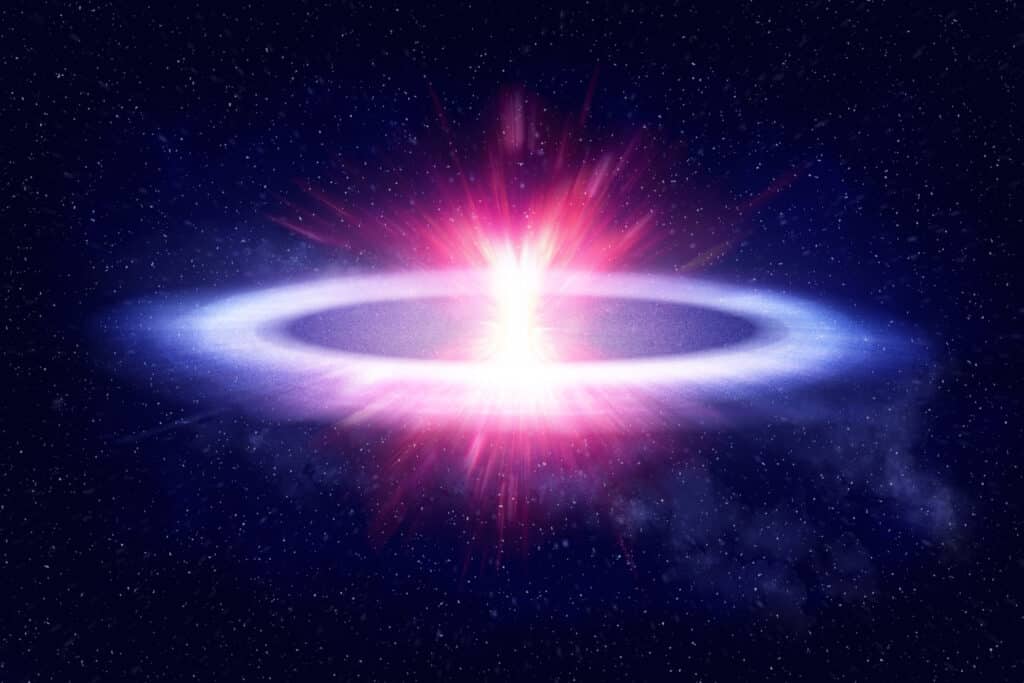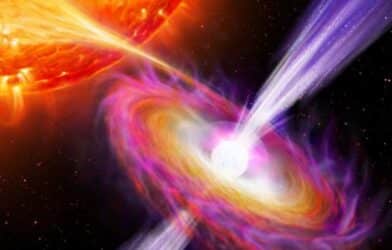An explosion 180 million light-years away, the size of our solar system, has left scientists perplexed due to its unprecedented flatness.
Explosions in space are typically expected to be spherical, as stars themselves are that shape. This discovery challenges astronomers’ understanding of space phenomena. The blast was an extremely rare Fast Blue Optical Transient (FBOT). The first FBOT was discovered in 2018, earning the nickname “the cow,” and only four others have been observed since then.
Scientists are unsure how FBOTs occur, but one potential explanation is that the stars themselves may have been surrounded by a dense disk. Other possibilities include material shed by a star just before it exploded or even failed supernovas.
“Very little is known about FBOT explosions – they just don’t behave like exploding stars should. They are too bright and evolve too quickly,” said lead author Dr. Justyn Maund, from the University of Sheffield’s Department of Physics and Astronomy, in a statement. Put simply, they are weird, and this new observation makes them even weirder.”
Dr. Maund continued: “Hopefully, this new finding will help us shed more light on FBOTs. We never thought that explosions could be this aspherical. There are a few potential explanations: the stars involved may have created a disc just before they died, or these could be failed supernovas, where the core of the star collapses to a black hole or neutron star, which then consumes the rest of the star. What we now know for certain is that the levels of asymmetry recorded are a key part of understanding these mysterious explosions, and it challenges our preconceptions of how stars might explode in the Universe.”

Scientists made the discovery after spotting a flash of polarized light entirely by chance. They used the Liverpool Telescope in La Palma to measure the polarization of the blast, employing the astronomical equivalent of polarized sunglasses. This allowed them to determine the shape of the explosion. They then used the data to reconstruct its 3D shape and map the edges of the blast, revealing its flatness.
Although the mirror of the Liverpool Telescope is only 2 meters in diameter, studying the polarization enabled the astronomers to reconstruct the shape of the explosion as if the telescope had a diameter of about 750 kilometers.
Researchers now plan to conduct a new survey with the international Vera Rubin Observatory in Chile. They hope this will enable them to discover more FBOTs and gain a better understanding of these phenomena.
The study is published in the Monthly Notices of the Royal Astronomical Society.
South West News Service writer Alice Clifford contributed to this report.












My theory on FBOTs
Compacted Material within a black hole is spinning rapidly and moving in one direction creating a centrifugal force which also creates a disk shape through gravitational waves.
There i solved it for you.
It’s the Death Star 💥